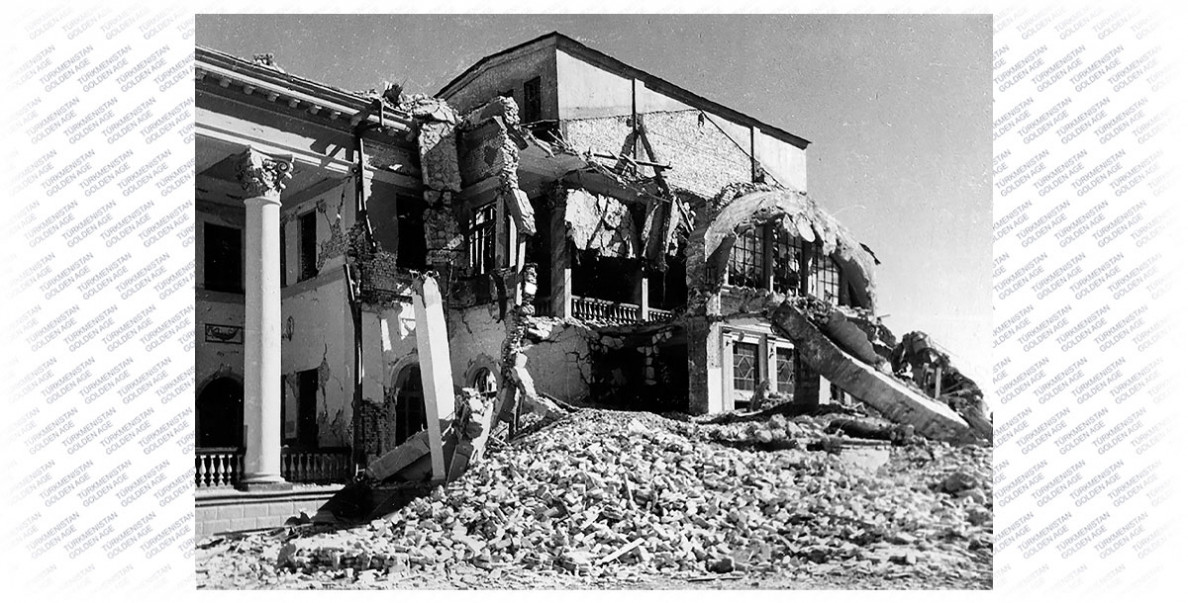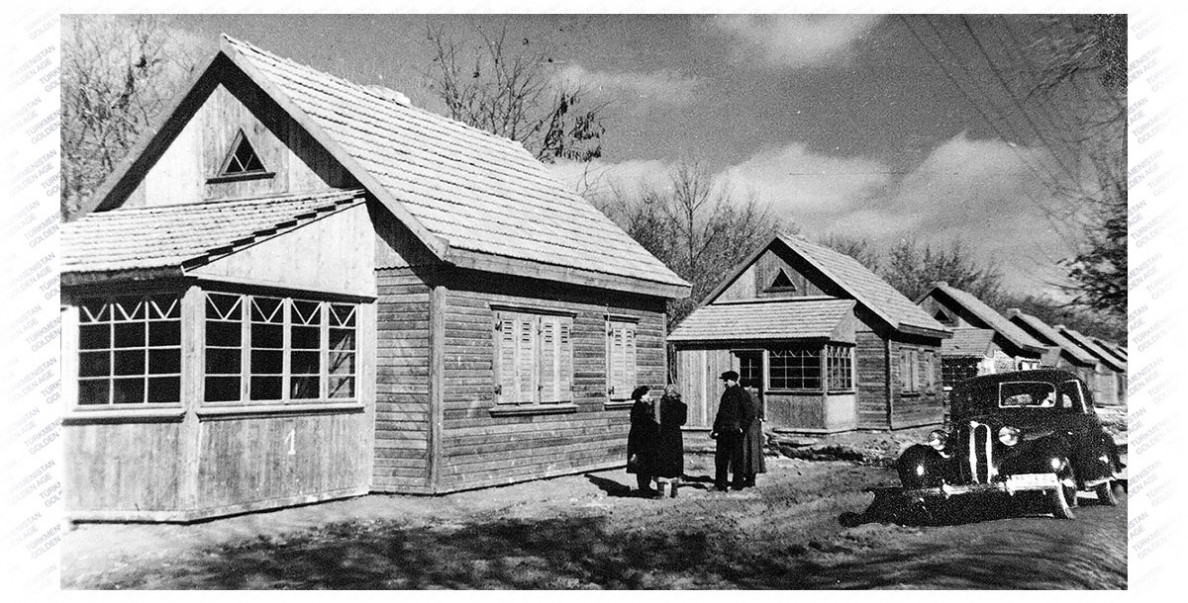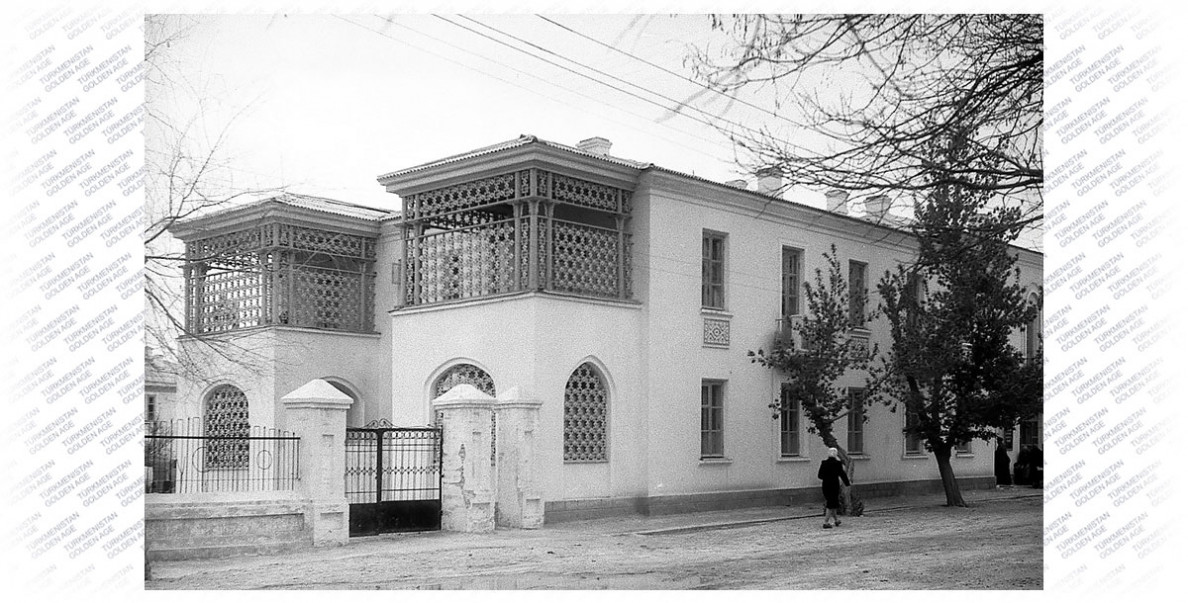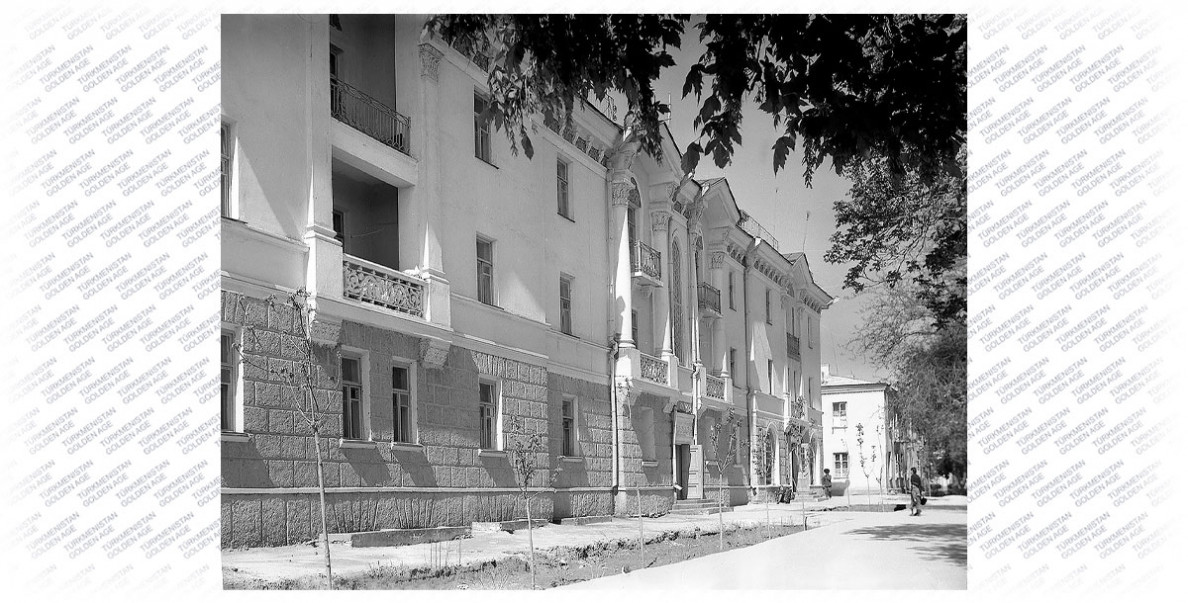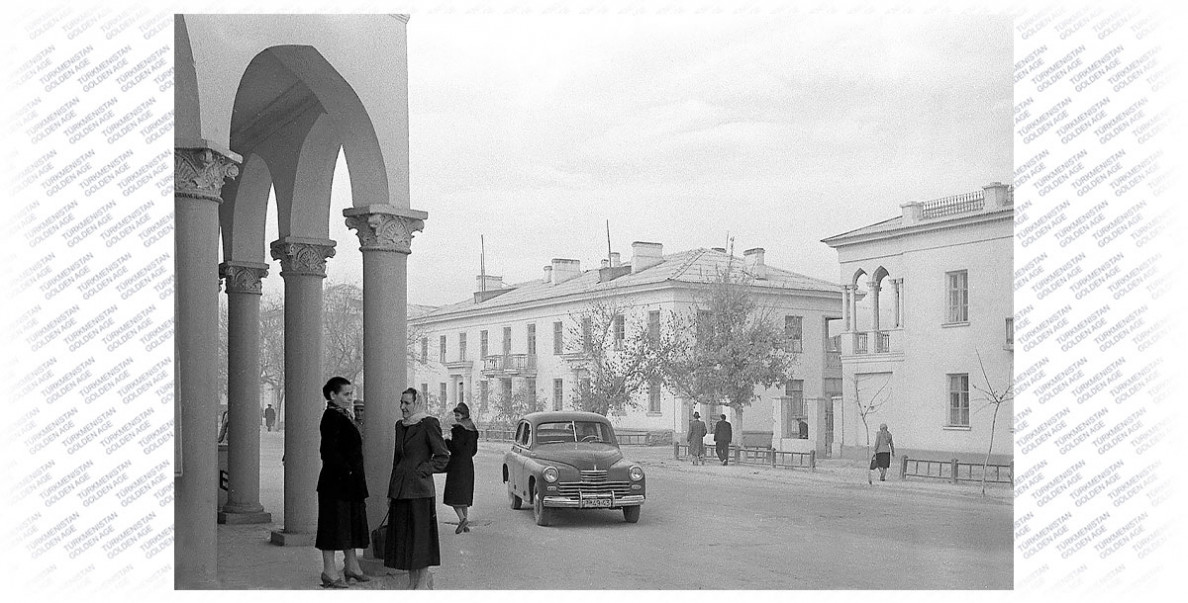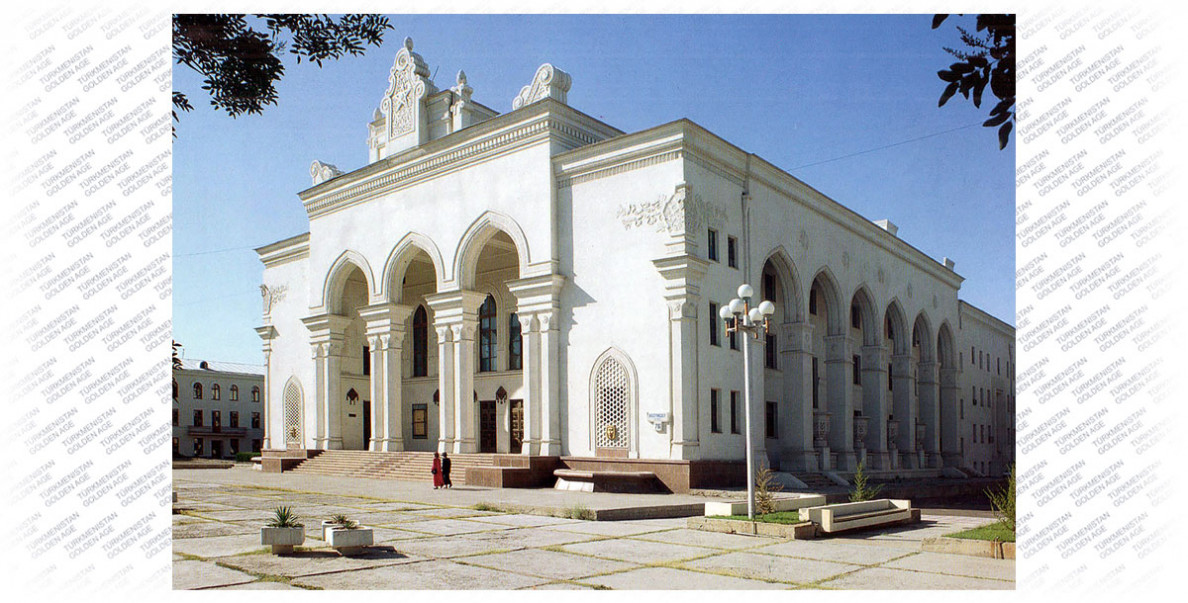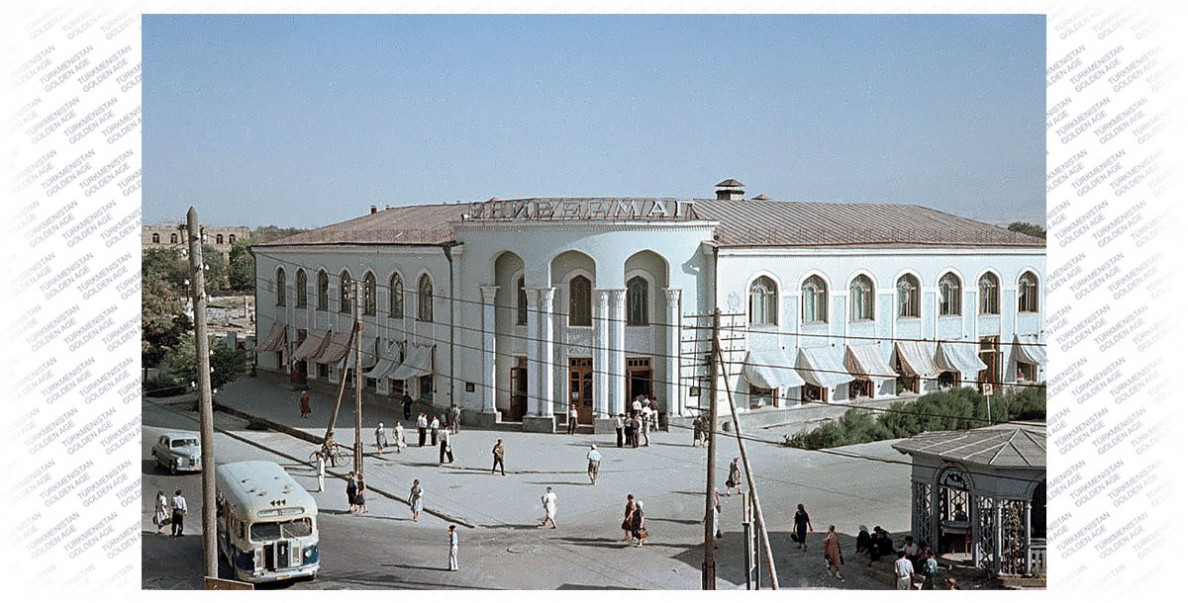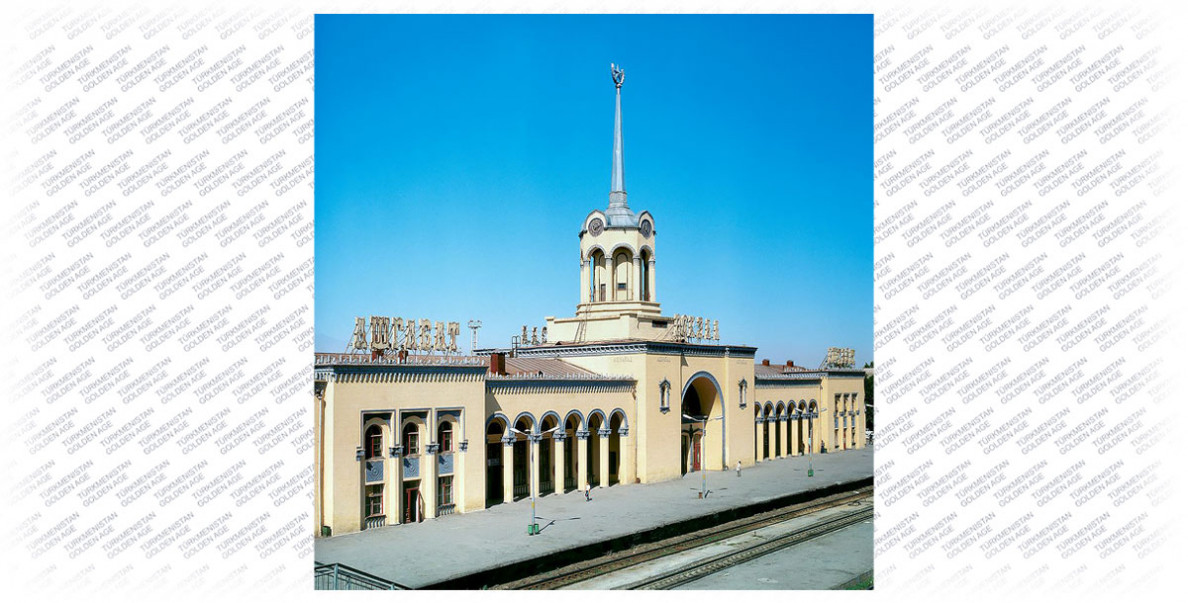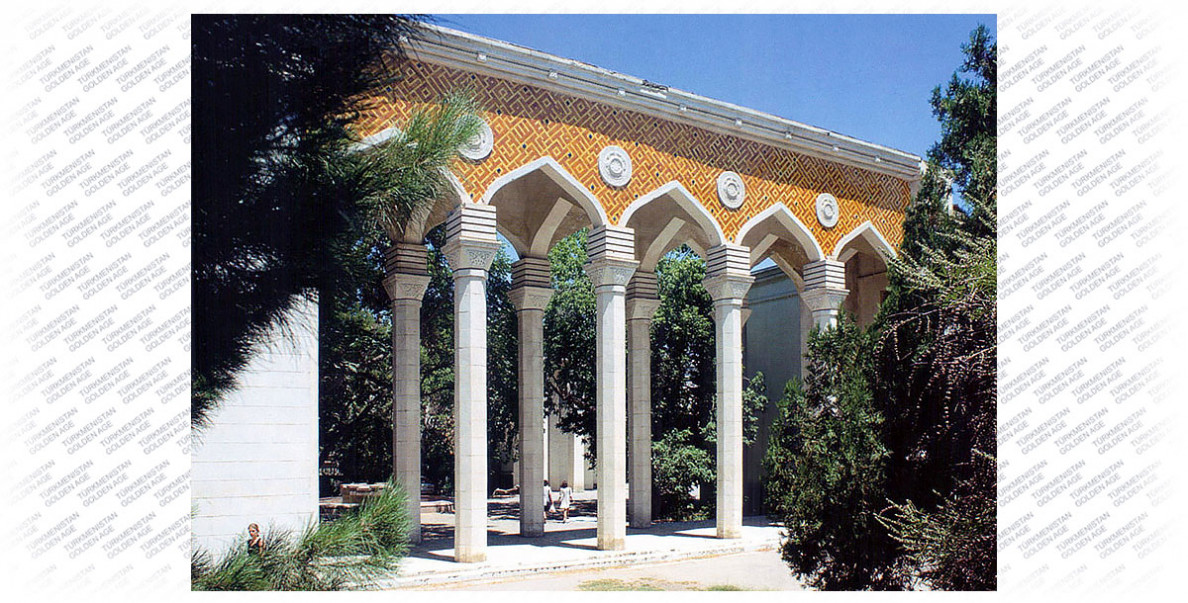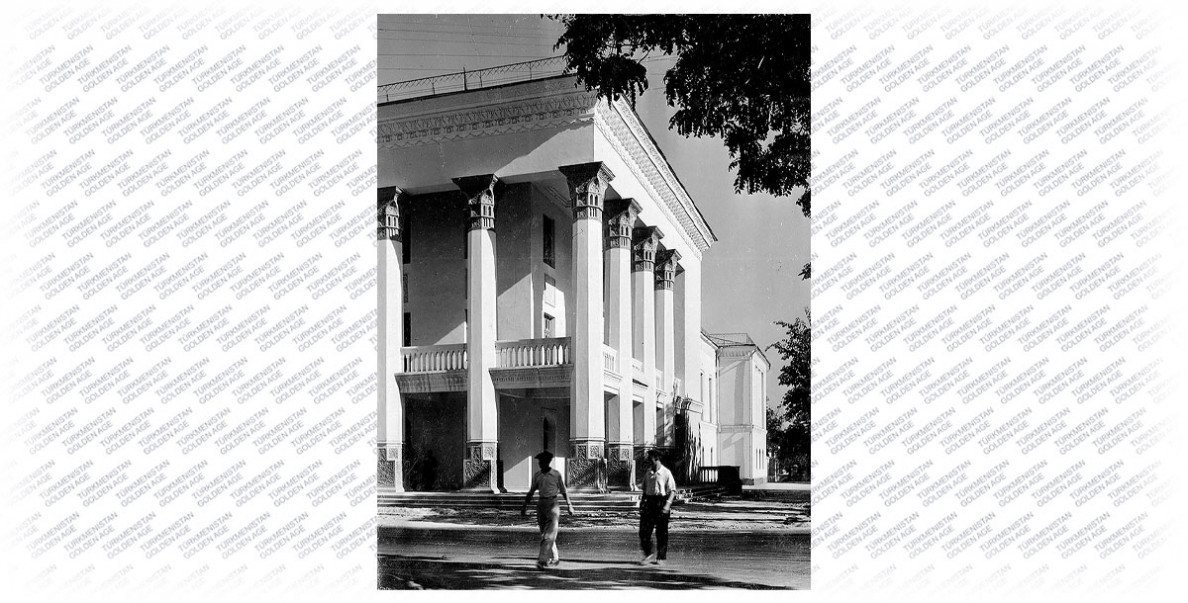On the threshold of the 140th anniversary of the capital of Turkmenistan, it is worth to look back and recollect from what Ashgabat began, what forestalled its appearance and what stages of history left traces in its current image. This city, which is loved by all generation of Ashgabat citizens, has its unique image these days as well being under dynamic development, it has the same uniqueness like it had in the past. The architectural historian Ruslan Muradov continue speaking about this. The first part of the story is under this link.
Ashgabat was in the center of the strongest earthquake on October 6, 1948 at 01:17 in the morning. The force of the earthquake has reached 9 – 10 points on Richter scale. One minute was enough to destroy the majority of the buildings in the city to turn its outskirts into ruins. All communications were broken. The dark of the night was it up with the glow of numerous fires through the clouds of dust, the air was filled with screams and moans of the wounded, crying of people who went mad from the grief. When the sun came up, a frightening view was revealed to people – there were only trees and hearth chimneys left in place of the city. There only few buildings left undestroyed and majority of them were in such dangerous condition so they had to be demolished later.
It is difficult to find out now how many people were killed in this terrifying catastrophe. The witnesses and researchers agree that official information of that time (25 – 28 thousand of victims) have been deliberately understated – there was much more victims and not only among permanent urban population but also among those who were on short visit in Ashgabat (especially military personnel), among numerous residents of surrounding villages. The figures are three or four times more. But it is also true that many people were saved on the first day after catastrophe owing to courage, self-control and self-organization of Ashgabat citizens, soldiers and officers of the city garrison as well as rapid and effective response, which started to be provided from Moscow, Baku, Tashkent, Alma-Ata and other cities. Many Turkmenistan citizens hurried to destroyed capital to search for their relatives and were actively helping to rescue personnel.
On the morning of October 6, the Karl Marx Square has turned into open-air hospital, where wounded people were brought. It was a place where the scale of the tragedy and mass heroism of people who selflessly for life of the injured have been revealed clearly. Doctors and paramedics worked 24/7 rendering first medical help, prepared heavily injured for medical evacuation to the nearest cities. For this purpose, the government provided 120 civil and military aircrafts. The trains were also utilized after damaged part of the railway has been repaired by October 8. Around 40,000 people have been evacuated from the city for the first 25 days according to estimation data. Many people have left the city by different reason spontaneously but at the same time, big number of people was coming from all parts of the country to participate in recovery of Ashgabat.
The earthquake has destroyed all raw brick construction, which predominated in Ashgabat, and heavily damaged the main part of hard-wall buildings made of tempered bricks, therefore they had to be destroyed while removing the rubble from the city. Trains in construction materials were coming to the capital of Turkmenistan for the whole following year. Timber was coming from Siberia, cement from Volga Region, metal works and various equipment from Ural and Ukraine, hundreds of prefabricated frame paneled houses from Baltic countries. No warehouses could store such volume of delivered cargo. The trains were offloaded along the railways ten kilometers to the east from the city.
While temporary living and so-called Finnish houses were rapidly built by the citizens, the project organizations of Moscow, Leningrad, Rostov and other cities were developing the plans of new Ashgabat urban development based on several series of typical projects. Mainly, it consisted of multi-apartment double-store masonry buildings with improved seismic resistance, stucco on facades and carved ornament on wooden elements of loggias. Small shops were usually opened on the ground floors of corner buildings. The houses was erected along the perimeters of old blocks making common internal yard inside, which was well developed and planted with trees and shrubs. While previously it was common street, which gathered the residents of one or two-apartment buildings together in Ashgabat, now it become a common yard. Such yards restored atmosphere of good neighborliness, kindness and cultural unity of different families connected with one destiny, which existed in Turkmen society before.
There were no brightly expressed ethnical and social differences typical for pre-revolutionary and pre-war Ashgabat in new city. Separate district like Turkmen, Russian, Persian and Armenian neighborhoods were disappearing. The population was growing (there were about 142,000 people in 1956), its composition was changing. Contradictions between traditional life style, national aesthetic and that environment that was forced by the government to the citizens building similar living in totally different regions of big country have escalated after 1958, when massive construction of micro-districts consisting of cheap three- and four-store typical panel residential buildings has expanded in Ashgabat. Barrack-like planning of these micro-districts has eliminated such concepts as street and yard, having replaced it with amorphous, socially excluded space.
For the years of the earthquake, it was managed to restore and increase the industry of the capital, which as before included glass, metal processing, textile and food factories and especially facilities making construction materials. Special attention was paid to the formation of energy base. In addition to wine-making in Bezmeyin and Geoktepe, all industrial facilities were inside the city. However, by the end of 1950s, the rates of industrialization have become so rapid that it was decided to build big and dangerous production facilities 15 – 20 km to the west of Ashgabat. Thus, industrial satellite city Bezmeyin with cement plant, ferro concrete production complex and powerful steam turbine power station started to be developed.
Opening of National Academy of Science based on Turkmen branch of the Academy of Science of the USSR in 1951 added capital’s importance to Ashgabat. Turkmen State university, several specialized higher educational institutes in Ashgabat have provided the republic with own personnel of various professions. Healthcare system was developing. In addition to number of clinics and hospitals, specialized medical scientific and research facilities were working in the city. Cultural fund of the capital included three theatre, philharmonic, two winter and three summer cinema halls, two museums, number of public libraries and clubs.
New architectural image of the old part of Ashgabat, different in style, quality and importance, has been formed up in 1950s. Mainly, administrative and public buildings, which visually demonstrated the style of the epoch of Stalin’s Empire style in Soviet architecture, have been concentrated in this place. It was a period of promotion of the heritage when the authors limited decoration of symmetrical façades with stucco, columns and porticoes, heavy eaves, arcades, decorative loggias, lancet windows and doors and sometime with domes.
Mollanepes Theatre (1951 – 1958, Architect Alexander Tarasenko), Complex of the Academy of Science (1952 – 1955, group of architects), Department Store on 1st May Street (1952 – 1953, Kazgiprotorg Institute) are among the brightest buildings in this rank. The building of the railway station (1955 – 1957, Architect Evsey Sorin), Cultural Club of Railroad Department (1950 – 1952, Architect, Elizaveta Helaiya), Turkmen State University (Architects Mikhail Kamyshnikov and Grigory Alexandrovich), number of governmental and administrative buildings as well as residential buildings were built in neoclassicism style. The city was rising from the ruins and becoming bigger and more representative than it was before the earthquake.




